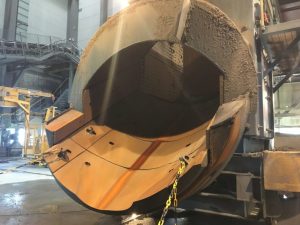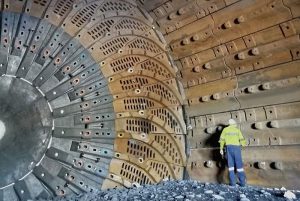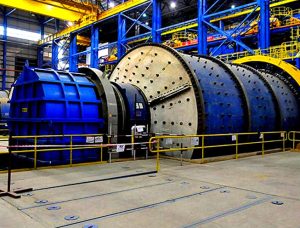Rubber Hose
To transfer liquids from one point to another, sometimes a rubber hollow tube is used that we called it hose. These hoses are made of rubber and cylinders. These hoses are used to transfer water and to transfer air from one place to another.
Hoses in environments where water or other liquids are present are usually used because they intend to pass air or special gas from this environment, and if they are housed in air or gas environments Usually used to transfer fluid types. Sometimes the hose is known as a tube or pipe.
Hoses in the industry are also used in many different ways. They are made in the process of extrusion. In general, the task of hose is mainly the transfer of fluid from space to space, but the hoses are used in different environments and for the transfer of various types of liquids or gases, and the same type of use of the hose that Determined the type of rubber needed to produce it. But in general, silicon hose can be considered the most popular type of hose.
Specifications of rubber hoses
rubber hoses are based on the type of liquids and gases they carry and generally have different requirements for production, which depends on the type of product they carry, the type of hose, the required layers and the different filler coatings.
Occasionally, for the production of hoses, depending on the type of hose, a combination of rubbers may be used, especially in order to provide the required properties for the hose layers.
One of the most important hose production parameters is to achieve a high adhesion level to ensure that the maximum hose resistance is provided for specific conditions and to fatigue.
The most important properties for the production of hose can be their resistance to oil and liquid, their resistance to aromatics, their resistance to temperature, their degree of endurance against decay and fatigue, and ultimately their ability to withstand ozone.
Types of Rubber Hose Applications
Rubber hoses are used in many household and industrial applications, some of which are most commonly used:
– Multifunctional or general purpose hoses used in many applications
– Agricultural hoses
– Air or airline or Aviation
– Hoses used in chemistry
– Hose suitable for construction
– Hoses used for Coolant
– Cryogenic rubber hoses
– Discharge hoses
– Hoses used in exhaust
– Fire hoses
– Health hoses used in food and beverages
– Hoses used in fresh air
– Irrigation hoses used in garden and landscaping
– Hose for heavy industry
– Air conditioning hose
– Hose used in the HVAC industry
– Special hoses for pharmaceutical and medical industries
– Special hoses for oil and petrochemical industries, fuel and so on
Types of rubber hoses in various industries Applications
- Fuel Hose:
These types of hoses have a very low permeability to fuel and are used to regulate and reduce the release of hydrocarbons. These hoses are suitable for a variety of fuel applications, including the transfer of all kinds of ethanol, methanol, etc.
due to their high resistance to swelling solvents. Because fuel types, gasoline and solvent inflation can not easily penetrate rubber hoses, black carbon is added to rubber hoses when produced.
- Radiator Hose:
These hoses are used for high temperature cooling because they are very resistant to coolants at high temperatures.
- Industrial Hose:
Because of the structure of these hose that are resistant to all types of solvents and chemicals, they are commonly used in various industrial applications, such as water and steam hoses, air hoses, oil and gas hoses, hoses Refrigerants or chemical hoses are used.
- Fire Service:
One of the most recognized industrial rubber hoses is the fire hoses because they are usually installed in fire stations or fire boxes or Fire Brigades. Inside this type of hose is a rubber compound that is resistant to water.
The overcoat of this type of hose is also made using a combination of abrasion resistant and high temperature rubber.
- Garden Hose:
These types of hoses are used to irrigate trees and lawns or to transfer water to a sprinkler for this purpose, which requires the interior body to be resistant to water and the outer body against water and abrasion.
- Air hoses:
for underwater diving and to carry air from a surface or reservoir usually these kind of hose are used.
- Automotive hoses:
The internal structure of the car is used to convey water, gas or various oils for lubrication or cooling, as well as hydraulic ones.
Important Tips to Consider When Buying a Hose:
It is best to consider these hints to buy a hose:
- Design
- Design units: Different units in the design of hoses are of interest to designers, based on English measurements in inches, or one inch fractions, or based on metric measurements based on millimeters or centimeters.
- Inside diameter: The inner diameter is the inner hose size
- Outside diameter: Used to provide standard specifications for corrugated or outer diameter hoses.
- Performance specifications
- Working pressure: The maximum pressure that the hose can withstand.
- Maximum vacuum: Maximum vacuum in inches or millimeters of mercury when the hose is placed in a standard space.
- Minimum bend radius: the mechanical bending strength and the amount of deformation composition of the hose cross section
- Temperature range: Maximum ambient temperature the hose can withstand
Construction options.
- Construction options
-
- Reinforced: Factors that have been used to reinforce the hose.
- Coiled: The amount of elasticity and flexibility of the hose.
- Corrugated or convoluted: Containing corrugations, pleats, or spiral convolutions.
- Articulated: The number of parts of the hose that is produced and replaced by certain couplings or joints.
- Multi-element: hoses made up of more than one hose and stand together in a form in ribbon, flat or bundled configuration.
چقدر این پست مفید بود؟
روی یک ستاره کلیک کنید تا به آن امتیاز دهید!
میانگین امتیاز 0 / 5. شمارش آرا: 0
No votes so far! Be the first to rate this post.




